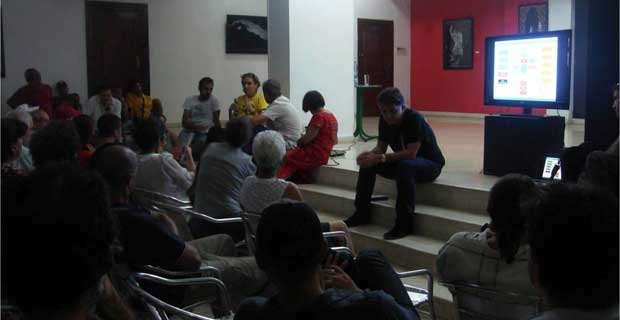At that time, already distant and alien, when some of the most popular songs in Cuba consisted of poems from the spirituality of the author, many chanted behind Mercedes Sosa’s chorus that “it changes everything changes … and what changed yesterday will have to change tomorrow … “. And since even dreams and utopias must be reformulated if they are to escape the risk of closure, the Cuban Institute of Cinematographic Art and Industry (ICAIC) decides to confront dynamic transformations involving urgent changes in operations and legal platform.
“Today the Cuban Cinema no longer begins at ICAIC or ends at the Latin American Film Festival-assures filmmaker Kiki Alvarez in an extensive and thoughtful open letter circulated profusely in the Web-we cannot think of it as a journey so short and much less on a single direction, the discussion, I think, should be other than pass through a reflection on the film that is being produced, what conditions and for what it is, social interaction, their creative aspirations, their production and marketing strategies, their preserving its cultural purpose “.
With the active and questioning participation of veteran and novice filmmakers, among which are included filmmakers Fernando Perez, Enrique (Kiki) Alvarez, Rebeca Chavez, Enrique Colina, Pavel Giroud and Manuel Perez, the writer Senel Paz and producers Inti Herrera and Daniel Diaz Ravelo, among others, ICAIC is beginning to reformulate itself as part of the economic reforms that Cuba lives since 2008, and as part of the essential tendency to “transform the whole body of law that may be hindering the development of this activity (film production), “according to statements made by Susana Molina, vice president of the Institute.
Among some of the proposed guidelines to verify the transformations is the document Proposals for a renewal of Cuban cinema, adopted at the Seventh Congress of the UNEAC in 2008, and the draft decree-law that should recognize the status of audiovisual artist, still not approved, and whose first version dates from 2009.
Both documents reflect certain priorities and general guidelines for producing movies, having access to a budget freely and organize the production of new films. In this regard, the efforts overlap ICAIC transforming actions with the aspirations of the film community in terms of updating the production methods and the legal framework surrounding the film activity, with special emphasis on the immediate approval of Decree-Law that established numerous legal and financial advantages for filmmakers and, above all, would end the legal irregularities of the independent production, one of the community’s priority claims.
Creators like moviemakers Esteban Garcia Insausti Insausti (Existen, Larga distancia) and producer Claudia Calvino (Juan de los Muertos, Melaza) advocate the creation of a Law on cinema as body legal support to Cuban audiovisual production as a whole, since the only guiding document for the film work of ICAIC remains the first cultural law enacted by the Revolution in 1959. Whether creating a film Act can be a slow and complicated process, for now the filmmakers, and ICAIC itself even agree on the need to change certain Customs regulations which currently hinder the work in the sector and transform laws that prevent a comprehensive cooperation mutually beneficial between the Institute and the so-called independent producers.
As in any process that drives change and transformation, there is a group of skeptics who only see the darker aspects of the crisis, while others are quick to try to improve many perfectible aspects. While some suggest that the ICAIC should be ousted, others cling to outdated formulas, and a third group thinks is importnat to keep what deserves support and are committed to transform and renew.
ICAIC restructuring goes through the necessary stimulus to production and exhibition, within and outside institutional networks, and it is also related to the conservation and maintenance of the International Festival of New Latin American Cinema (founded in 1979) and intertwined with the fate of the International School of Film and Television of San Antonio de los Baños (created in 1986). Three institutions have governed an important part of the visual image of Cuba and are therefore in accordance with the necessity of changing following the transformations in the country.










